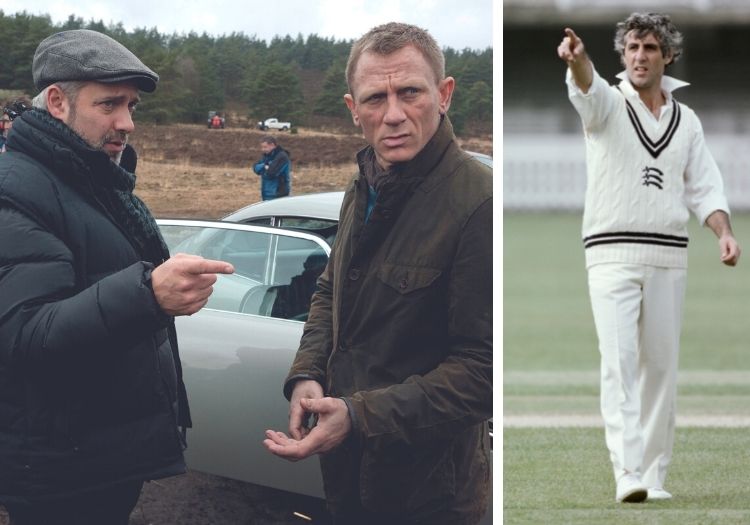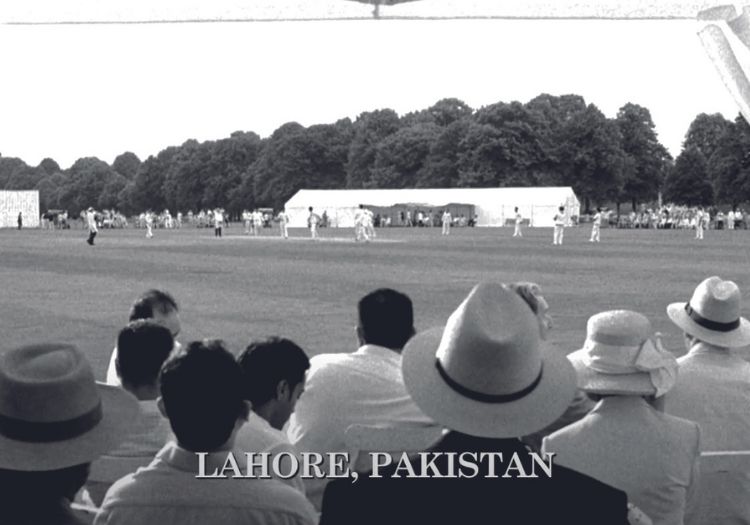
SIMON HUGHES: As a student he had followed Middlesex and devoured Brearley's The Art of Captaincy and admitted to carrying it around on the set of American Beauty
I got to know Sam Mendes in 1997 when he was the director of the Donmar Warehouse and he had written an article in The Daily Telegraph about the deep bonds between theatre and cricket. It resonated with me (my father was an actor and passionate about cricket), so we met for a drink and we became friends.
It turned out that he had been a handy player, a prolific batsman at Magdalen College School, Oxford, and was selected for The Rest against the Southern Schools. He made 28 batting at No.3 before being bowled by Norman Tebbit’s son William.
Later he starred for Shipton-under-Wychwood CC from Oxfordshire in the semi-final of The Cricketer’s National Village Cup in 1997. He struck 48 from just 26 balls against Milstead from Kent. Alas he couldn’t replicate that form in the final, making 8 as Caldy, from the Wirral, won by 56 runs.
Cricket also had a massive influence on his directorial life. He was hired by the Chichester Festival Theatre soon after leaving Cambridge because its director had been informed of his sporting abilities and was sick of losing their annual cricket match to the Royal Shakespeare Company. It was there that Steven Spielberg was first acquainted with Mendes, culminating in him being offered the job of directing the Oscar-winning film American Beauty.
The backstop: Bravo! Dwayne has the last laugh
You would imagine the wunderkind of British theatre would most revere legendary figures like Franco Zeffirelli, David Lean or the great Hollywood actors. But he told me that the person he most wanted to meet was Mike Brearley. As a student he had followed Middlesex and devoured Brearley’s The Art of Captaincy and admitted to carrying it around on the set of American Beauty.
“One of its underlying themes is treat every person differently, don’t come with a pre-methodology,” he said, “and that was a very important aspect of how I directed American Beauty.”
I introduced them and they immediately became absorbed in deep conversation laced with huge mutual respect and are now good friends. Mendes wrote the foreword to a new edition of Brearley’s seminal book on captaincy. He also got to know Mike Atherton – partly through the Cambridge connection – and later that summer he invited us and our families to his house in Oxfordshire for the day. Ostensibly this was for us to have lunch and allow our kids to roam about his and his wife Kate Winslet’s lovely garden and adjoining cricket pitch. In fact he just wanted us to bowl at him in his carefully maintained net. He could clearly bat and was starting to enjoy himself rather too much until we decided that was enough and I bounced him out.
Despite his illustrious career and spending a lot of time in the United States, he keeps a close eye on English cricket. He always attends the Lord’s Test and acted as an artistic consultant to the ECB during the build-up to the 2019 Cricket World Cup.
By Huw Turbervill
Sam Mendes directed the magnificent American Beauty, a poignant ode to middle-aged, middle-class disenchantment. He also helmed two Daniel Craig-starring James Bond films, Skyfall and Spectre. Alas neither had any cricket in them. Craig’s debut, Casino Royale, nearly did, though.
The deleted pre-credits sequence (available on YouTube) sees Bond kill a spy in a cricket pavilion in Lahore (although it was actually filmed at Eton College). We see two balls bowled, one is hooked nicely into the crowd off a left-arm quick, the other sees the stumps castled (a bit of a non-shot there… maybe it was the No.11 batting). The film was directed by a New Zealander, Martin Campbell… not sure why he cut the cricket then…
Cricket never gets the treatment golf does from author Ian Fleming – making for that unforgettable sequence in the book and film of Goldfinger when Sean Connery’s 007 outwits Auric.
It is mentioned several times in print, though.
In Moonraker Bond describes the baddie Hugo Drax as “a national hero. The public have taken to him. I suppose he’s in much the same class as Jack Hobbs.”
Canterbury and Lord’s are mentioned in The Spy Who Loved Me.
And there is a funny exchange between Bond and Japanese spymaster Tiger Tanaka in You Only Live Twice.

“What is a box?” asks the latter.
“It is what our cricketers wear to protect those parts when they go out to bat. It is a light padded shield of aluminium,” replies Bond.
“I regret that we have nothing of that nature. We do not play cricket in Japan. Only baseball.”
“Lucky for you, you weren’t occupied by the British,” Bond says.
“Cricket is a much more difficult and skilful game.”
“The Americans say otherwise.”
“Naturally; they want to sell you baseball equipment,” quips Bond.
In Octopussy, the jewelled Fabergé egg is compared to the size of a cricket ball, while the villain Kamal Khan is said to play the game.
Matthew Fleming, formerly of Kent and England, is the great-nephew of the author. He now sits on the committee that decides how the James Bond character can be used commercially outside of the famous films: Ian Fleming Publications and James Bond Enterprises. Now they are true licences to thrill.
This article was published in the Summer edition of The Cricketer - the home of the best cricket analysis and commentary, covering the international, county, women's and amateur game